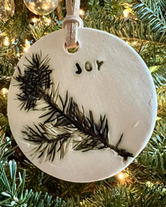 Dear 24 Carrot Writer – We wish you JOY this holiday season after a year of devotion to a passion we all share – a love of writing. As we ring in the New Year, may 2024 bring you…
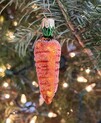 Happy Holidays! ~ The 24 Carrot Writing Crew
0 Comments
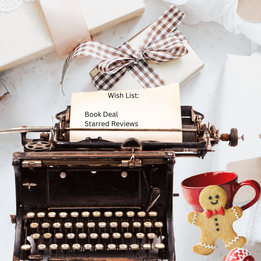 In between dipping gingerbread toes into warm cups of cocoa, 24 Carrot Writing's guest bloggers, contributors, and active founders have conjured up the 2023 Writer's Holiday Wish List! While we cannot wrap up a book deal, or tie a shiny bow around a starred review, we are sharing the special items that make our creative endeavors happier, more successful, and wonderfully productive. We hope you find ideas you want to share and maybe a few carrots for your next month of goals. If folks are asking for gift ideas, this is the post to send them.
 Kirsten is the author of WOOD, WIRE, WINGS: Emma Lilian Todd Invents an Airplane, illustrated by Tracy Subisak (Calkins Creek 2020), A TRUE WONDER: The Comic Book Hero Who Changed Everything, illustrated by Katy Wu (Clarion 2021), and THE FIRE OF STARS: The Life and Brilliance of the Woman Who Discovered What Stars Are Made Of, illustrated by Katherine Roy (Chronicle 2023). Learn more about Kirsten at KirstenWLarson.com.
 Cathy Ballou Mealey is the Boston based author of WHEN A TREE GROWS (Sterling 2019), SLOTH AND SQUIRREL IN A PICKLE (Kids Can Press 2021) and MAKE MORE S'MORES (Sleeping Bear Press 2023). Learn more about Cathy here.  Carol's two most recent titles are SOME DADDIES (Beaming Books, 2022) and TRUCKER KID (Capstone, 2023). You can find out more about her books and writing life at https://carolgordonekster.com. 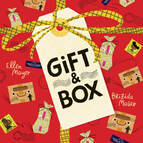 KIRKUS said of Ellen Mayer’s new picture book GIFT & BOX, “This story is absolutely the full package” (Knopf Books for Young Readers, 2023). This book for ages 3-7 years makes a perfect gift for the upcoming December holidays. To learn more about Ellen, visit her at www.ellenmayerbooks.com
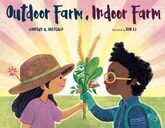 Lindsay H. Metcalf is a former journalist who writes nonfiction and poetry for children. Her latest book, NO WORLD TOO BIG: Young People Fighting Global Climate Change (Charlesbridge, 2023) is a poetry anthology from the team behind the award-winning NO VOICE TOO SMALL (Charlesbridge, 2021). OUTDOOR FARM, INDOOR FARM (Astra Young Readers 2024), illustrated by Xin Li, is forthcoming in the spring of 2024. Learn more at lindsayhmetcalf.com and @lindsayhmetcalf on social media.
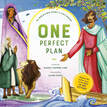 Nancy Tupper Ling is a children’s author, poet, book seller and librarian. Basically, she surrounds herself with books! Occasionally, she creates a few books of her own, including her latest, ONE PERFECT PLAN: THE BIBLE'S BIG STORY IN TINY POEMS, plus THE STORY I'LL TELL, DOUBLE HAPPINESS, THE YING-YANG SISTERS, MY SISTER, AILCIA MAY and FOR EVERY LITTLE THING with co- author, June Cotner. Visit www.nancytupperling.com to learn more.
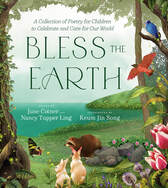 Kelly is a 24 Carrot Writing co-founder and an award winning children’s fiction author. Her picture book, HOW LONG IS FOREVER? (Charlesbridge, 2020) was named a MUST READ by the Mass Center for the Book. To learn more about Kelly visit here.
 Amanda Smith is a co-founder of 24 Carrot Writing. Her poems can be found in the Writer's Loft Anthologies, Gnomes and Ungnomes: Poems of Hidden Creatures (December, 2023) and Friends and Anemones: Ocean Poems for Children and in the upcoming anthology Bless the Earth (Convergent Books, 2024). Learn more at AmandaSmithWrites.
 Kristi Mahoney is a children's book writer from Massachusetts. Her debut picture book, ALPACAS MAKE TERRIBLE LIBRARIANS, will be released by Gnome Road Publishing in Fall 2024. Kristi is a regular contributor to 24 Carrot Writing. She can be reached at www.kristimahoneybooks.com.
 Megan is the author of TWINKLE, TWINKLE, WINTER NIGHT (Clarion, 2022) and the DIRT & BUGSY early reader series (Penguin Workshop, 2023). She is a 24 Carrot Writing regular contributor. To learn more about Megan visit her here.
 Annie Cronin Romano is one of the co-founders of 24 Carrot Writing and is a published picture book author. In addition to her love of kidlit, she also writes adult fiction, works as a bookseller at an indie bookstore, and is a literary associate with Olswanger Literary. Learn more about Annie at www.anniecroninromano.com. 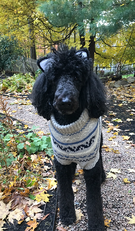 Guest Blog by Susan Lubner One morning I accidentally locked myself inside a large dog crate with my Standard Poodle. He was pleasantly surprised. Me? Not-so-much surprised, and there was nothing pleasant about it. There was the time back in the 1990’s when I thought I had phoned a women’s clothing boutique by the name of Definitely Wendy. A who’s on first type of conversation ensued. “Is this Definitely Wendy?” I asked. “Yes. It’s definitely Wendy’s,” the woman replied. I asked if they had any wraps in stock. (I was hoping for cashmere or at least a blend.) “We have pita wraps,” she told me. I thought she said Peter wraps. I’d never heard of that designer. “What are those like?” I asked. She said, “You can get them however you want…lettuce, tomatoes, pickles…” (As a sidebar…I never knew that that Wendy’s served anything but burgers!) 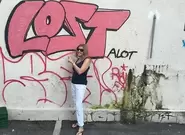 Then there was the day last spring when I showed up at a meeting wearing my fuzzy slippers (did I tell you that the meeting was at a construction site?) Embarrassed, I apologized for leaving my house so absent-mindedly only to have someone point out that I was also wearing my sweater inside out. I have a knack for finding myself in situations like these. And it runs in my family. My mother had oodles of her own humorous and seemingly preposterous stories and situations to tell and retell. 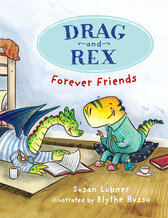 In the first book of my new early reader chapter book series, Drag and Rex Forever Friends (November 2023) there are three stories, each with three chapters. My characters, Drag and Rex were created with real qualities of real somebodies…great friends with very different personalities…a truth seed! But then of course, there’s the fictionalized fact that one is a dragon and the other a T-rex. And that’s just the beginning. Their qualities are exaggerated greatly, and I made up other characteristics. Still, they started with that truth seed. In the first story, an impulsive Drag cannot help himself and gobbles up something meant as a surprise for someone else. (There may have been that time I was bringing a fresh baked loaf of bread to a friend’s house for dinner and by the time I arrived there was only half a loaf left.) I use that same truth seed in the next story, and again in book 2 (Sweet and Silly, Fall 2024) each time in entirely different ways, with completely different storylines. That seed of truth…that I ate half a loaf of bread on the way to my friend’s house… is unrecognizable in each book. Yet it was used to successfully “sprout” a variety of fictionalized scenes. Even if you have never locked yourself in a cage with your dog, we all have truth seeds. What are yours? And which ones should you catalogue? It’s possible you already keep a diary or maybe you have one and don’t realize it! It may be that your truth seeds can be found in your many photos… fabulous trips, numerous family celebrations, your happiest moments with friends. Maybe you have compiled a list of your favorite quotes? Or poems? Or restaurants? Or maybe you keep track of the titles of all the shows you plan to watch (or have watched) or the books you want to read (or have read). Is there a common theme to all of these titles? Some people keep track of goals or dreams (as in the kind you have when you are sleeping). Do you have a collection of coins or stamps or seashells and a special memory attached to some of them? Perhaps you have several of these things? There’s no right or wrong way to use your truth seeds. Maybe a setting is fleshed out from that special beach you captured in your photo? Maybe your opening scene starts with the crazy dream you had last night or the coincidence you experienced two weeks ago? How many different ways can that setting, or scene or character be written? Try it. See where it takes you…it just may kickstart your next story. In the end, it’s very possible that your manuscript will turn into something that doesn’t even resemble that first planted seed. That’s the fun and beauty of fiction. But the seed will sprout and grow and maybe even blossom. It will serve you well! And that’s the truth. 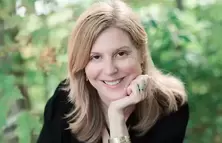 Susan Lubner is the author of three picture books (Abrams Books for Young Readers) and two middle grade novels, LIZZY AND THE GOOD LUCK GIRL (Running Press Kids/Hachette Books) and THE UPSIDE OF ORDINARY (Holiday House). To learn more about Susan visit her at https://www.susanlubner.com/. To order a copy of DRAG & REX click here.  Guest blog by Nancy Tupper Ling Here’s the thing. If we knew all the twists and turns of this writing journey at the start, many of us might opt out early on. It’s definitely not for the faint of heart. Sometimes in the midst of this journey, a leap of faith is required. We might decide to pivot, try a new genre, or join a different critique group. According to the Cambridge Dictionary, a leap of faith is “an act of believing something that is not easily believed.” On this road to publication, we are all taking a hop, a leap, or a gigantic jump in an effort to see our words in a reader’s hands someday. In the case of picture books, we might be praying for beautiful illustrations as well. Recently I took a literal leap of faith . . . toward my faith. It was risky. I’ve always included some aspect of my faith in my books, even if it’s simply the Latin phrase Soli Deo Gloria in my dedication, as composers Johann Sebastian Bach and George Frideric Handel did long ago. Simply put, the “glory goes to God alone.” In the last few years, however, I had a desire to submit anthologies and picture books that were more faith-centric. This meant taking a new road to publication, including joining with agent, Anne Marie O’Farrell, who believed there was a market for these books. Thankfully, she soon met Bunmi, Ishola, an awesome editor from Penguin/WaterBrook, who was in search of manuscripts with God at their heart. Turns out ONE PERFECT PLAN: THE BIBLE'S BIG STORY IN TINY POEMS was a good fit. Of course, none of this happened instantaneously. A lot of side streets were taken on this journey, and soul-searching as well. Certainly, I learned a great deal about myself and my priorities along the way. In case these tips might help you make a leap or two in your own writing career, I offer a few to consider: Heart and Soul If you do nothing else, take time to think about what makes your heart beat, and what stirs your soul. When you think about it, we’re all writing for someone. Who are you picturing reading your future book? What topic or idea won’t let you rest if you don’t write it? The idea for ONE PERFECT PLAN sat in a drawer for a long time. Really, a LONG time (since 2007). Still, the idea kept coming back, giving me a tap on the shoulder. It began with the premise that one event, one promise, or one person can make a huge difference in this world. Plus, I wanted to tell epic Bible stories in short poems so children might memorize them, and also read the entire Bible (its essence) in one sitting. That idea stirred my soul. What stirs yours? 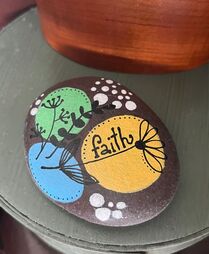 Mentors We hear a lot about reading mentor texts, or finding comparative stories, but who are the authors out in the world whom we admire most? Who’s already taken that leap of faith and is writing those stories that reflect their passion and purpose. For me, it was authors who weave their faith into their stories and their lives, mentors like Nikki Grimes and Mitali Perkins. I’ve also learned that traveling this road with a book buddy or two is key, like Janet Costa Bates and Lynda Mullaly Hunt, to name a few. As long as you’re open to learning more about this field of writing, you’ll surely find a mentor to guide you along the way. Who do you admire? Post-Its & More We all need a word of encouragement, or two or three, in this publishing business. The question is: Who are you listening to? Many times after a number of rejections or revisions, it’s hard to keep on writing. It’s hard not to hear those negative voices. So I’ve taken to posting a lot of sticky notes on my bathroom mirror, in my car, and on my laptop. They are hope-filled. I even leave some for my husband and daughters now and then. Sometimes it’s a Bible verse, like this one: "Now faith is the assurance of things hoped for, the conviction of things not seen" (Hebrews 11:1) Or, it could be as simple as “You’ve Got This!” And you can never go wrong with a Mary Oliver quote like: “I want to think again of dangerous and noble things. I want to be light and frolicsome. I want to be improbable, beautiful and afraid of nothing, as though I had wings.” And when you run out of encouraging words, there are times when a friend gifts you a Kindness Rock with just the right words on it to inspire you. Think about the gifts you’ve received. 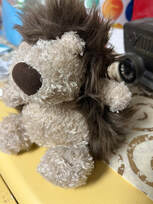 Storing Up Treasures Even beyond the inspiring words, I like to collect tangible objects that remind me of my stories. When I look at these treasures, it helps me to feel a sense of reassurance that someday the manuscripts they represent might become books. Long before DOUBLE HAPPINESS was accepted by Chronicle Books, I discovered a sweet pencil box in an antique shop that had the phoenix and the dragon painted on the cover. In Chinese tradition, this represents double happiness (usually at weddings). That box sat on my writing desk for years, reminding me of my dream for that book. Even now, I have one story that has yet to be accepted with a hedgehog character named Phoebe. Trust me, this little fluffy hedgehog gives me hope that Phoebe may grow into something more someday. Sometimes it’s the littlest things that keep us inspired and maintain our faith. Generosity This has been my mantra: “It’s a long journey to publication. Yes, it can take a leap or two of faith, but all along the way practice the art of generosity.” Even now I need to be remind myself of this goal. I’ve become a stronger writer in spite of or because of the mistakes I’ve made along the way, and I want to encourage others that getting a book published is possible. One of my favorite poetry teachers was a quiet, soul-filled man named Donald Sheehan who ran the Frost Festival in Franconia, NH, for many summers. Daily, he reminded the participants that while we might be desiring to break into the world of publishing more than anything in the world, if we’re unable to have a kind and generous spirit along the way, we’re missing the essence of the journey. I couldn’t agree more. So, take heart, and practice some soul-searching. You may discover a sharp pivot is in your future, and it might be the very best move you will make for your writing career. Certainly, I thought this publishing journey would go a lot smoother and faster, but it gave me time to become brave enough to pursue a book that showcased a faith that’s important to me. Cultivate the art, but keep your eyes wide open for the gifts you’ve received already: In Mary Oliver’s words, “Sometimes I need only to stand wherever I am to be blessed.” 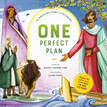 Nancy Tupper Ling is a children’s author, poet, book seller, and librarian. ONE PERFECT PLAN: THE BIBLE'S BIG STORY IN TINY POEMS (WaterBrook, 2023) is her 6th picture book, with two more on the way in 2024 including BLESS THE EARTH: A COLLECTION OF POETRY FOR CHILDREN TO CELEBRATE AND CARE FOR OUR WORLD (The Crown Publishing Group, 2024) which includes 24 Carrot Writing founder Amanda Smith’s poem, “Wonder,” and HEARTS IN MY POCKET. Nancy is also the author of THE STORY I'LL TELL (Lee & Low, 2015), DOUBLE HAPPINESS (Chronicle, 2015), THE YIN-YANG SISTERS AND THE DRAGON FRIGHTFUL (G.P. Putnam's Sons Books for Young Readers, 2018), MY SISTER, ALICIA MAY (Pleasant Street Press, 2009) and FOR EVERY LITTLE THING (Eerdmans Books for Young Readers, 2021) with co-author, June Cotner. To learn more, visit www.nancytupperling.com. Read our review of ONE PERFECT PLAN here. 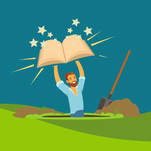 Guest blog by Carol Gordon Ekster When rejections pile up for a manuscript, it often gets tucked away in a drawer. But, you should always be ready to pull it out again. That's what happened with TRUCKER KID (Capstone, 2023).  I had written a picture book in 2013 when I visited my daughter and we dined at my favorite restaurant. I couldn't help but overhear a family's conversation at a nearby table. Three-year-old Athena was discussing a trucking trip she took with her daddy. My writing brain ignited, and I immediately had my title, Trucker Girl. I told the family that I was a children's author, how their discussion inspired a title, and I asked for their contact information. I came home from that trip and took out library books on trucks and trucking. I knew nothing about this topic. One month later I started e-mailing with the dad to ask some questions and about a month after that I brought the manuscript to a critique group. In the first draft Athena didn't want to go trucking with her dad but came to love it. With wisdom from my critique partners, the manuscript continued to change and improve. I also had professional eyes on it. In 2014, I took Trucker Girl to a one-day workshop at the Eric Carle Museum, "Revising and Re-Imagining Your Picture Book", with Harold Underdown and Eileen Robinson. Jane Yolen and Heidi Stemple offered some suggestions when I took this manuscript to their Picture Book Boot Camp in 2015. And even though it went through revisions, it gathered close to one hundred rejections. Then during COVID, I pulled it out again. I had seen for myself the importance of trucks and their drivers during this difficult time. I added in back matter to show how we rely on trucks, tightened the manuscript yet again, and, finally, this ended up being one of three manuscripts that helped me secure my first agent. That agent had a few small suggestions that made the manuscript even tighter before she sent it out on a small round of submissions. When Capstone editor Chris Harbo acquired it, he requested only minor tweaks. That made my writers' heart incredibly happy. I had been right to bring back this manuscript and not give up on it. Capstone did request a title change from Trucker Girl to Trucker Kid, and of course, I said yes! It took about ten years from the idea of the story until I held the book in my hand. If you have patience and trust, and are willing to work and revise, you can love and appreciate the magic of a writing life. 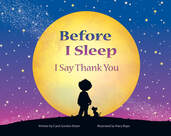 Another title, Before I Sleep: I Say Thank You, illustrated by Mary Rojas, started out as a Jewish bedtime picture book. I woke up one day repeating a prayer that starts with, "Before I sleep, it's time to pray…" I wrote it down on a notepad next to my bed. It took a few months to get this idea down as a draft. It turns out I had to be very flexible with this manuscript. After subbing it to the limited number of Jewish publishers and hearing positive comments but not selling it, I revised it to be secular. I had a publisher request a revise and resubmit with specific suggestions. They didn't take it, but the manuscript was strengthened. Then one night at a critique group meeting, one member mentioned she spoke with an editor from Pauline Books and Media about their interest in a picture book about forgiveness. I left thinking that if they were interested in forgiveness, they might be interested in gratitude. I tightened the manuscript again and sent it in - to this Catholic press. They acquired it! So, it went from a Jewish story to a secular story, to a Catholic one. This book, which took thirteen years to hold in my hand and thirty rejections, sold to the right publisher. It is now in its fourth printing and has won two awards. It was a finalist for the ACP Excellence in Publishing Awards 2016 and a third-place winner in the Catholic Press Association awards in the children's book category, 2016. It's important to keep your ears and eyes open for possibilities and stay current in the publishing world. Check Publishers' Weekly Rights Reports and tune into the interests of editors. That way you'll know when the market might be right for your drawered manuscript. Let your manuscripts percolate if needed, polish them with revisions, but don't forget about them completely. Believe in the process! Believe in your work. 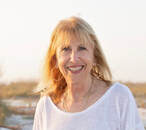 Carol Gordon Ekster grew up in Brooklyn, New York. After graduating from Boston University and getting a Master’s degree in reading and language she was a passionate elementary school teacher for 35 years. At the end of her career, she began writing unexpectedly. Her two most recent titles are SOME DADDIES (Beaming Books, 2022) and TRUCKER KID (Capstone, 2023). You can find out more about her books and writing life at https://carolgordonekster.com. To order a copy of Trucker Kid click here. 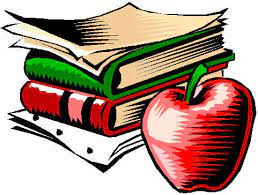 by Kristi Mahoney As writers we can learn any time of year, but it’s no secret that this industry slows down in the summer. Thankfully, as back-to-school time approaches, the crisp air often brings with it new possibilities and renewed inspiration. If you’re feeling ready to replace your beach bag with a book bag and fill it with new pencils, notebooks, and some back-to-school reading devoted exclusively to writers, we have just the list for you. It’s especially suited for those who already know the basics in their genre and are looking for some inspirational advice as they dive back into writing this fall. Nelson Mandela once said, “Education is the most powerful weapon which you can use to change the world.” So this September, if you feel inspired—welcome back to school. Dive into our BACK-TO-SCHOOL READING LIST FOR WRITERS: 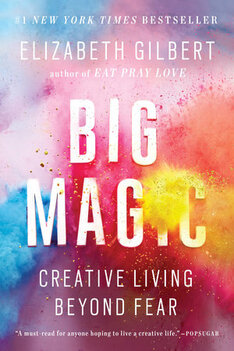 Big Magic: Creative Living Beyond Fear by Elizabeth Gilbert Elizabeth Gilbert is perhaps most well-known for her bestselling book Eat Pray Love, but in my opinion, this book is her shining star. Through her own personal experiences and theories on inspiration, Gilbert empowers creators everywhere to overcome self-doubt, hindering perfectionism, and something almost all creatives can relate to – the dreaded imposter syndrome. I devoured this book the first time I read it and make it a point to read it again anytime I need a good creative kick. If you ever feel the same way, I urge you to do the same. Because, as creatives, there’s going to come a point you may have to ask yourself some tough questions. Are you brave enough to take that next step? Do you have the courage to put your work out there? Will you take the leap? In the words of Gilbert, “The treasures that are hidden inside you are hoping you will say yes.” 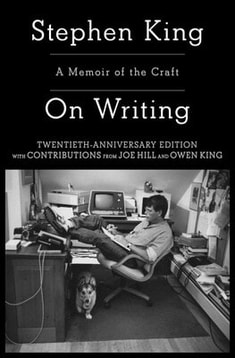 On Writing: A Memoir of the Craft by Stephen King I grew up loving Stephen King’s books, but although his stories are impeccably written and fascinating, his fiction work tends to steer darker than I can handle these days. Thankfully, I found this book, King’s first book after recovering from a near deadly car accident. It’s equal parts memoir and tangible craft advice, providing insights on everything from how King sold his first manuscript (after throwing it in the trash) to why you should remove almost every adverb in your work. The book is captivating, inspiring, and a great reminder of why King is one of the most well-known storytellers currently on this planet. 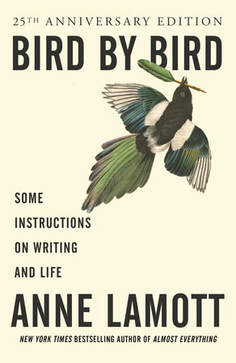 Bird by Bird: Some Instructions on Writing and Life by Anne Lamott There’s a lot of buzz around Anne Lamott’s Bird by Bird in the writing community for good reason. You don’t have to look further than the title for the first big lesson in this book. It’s a reference from a piece of life-changing advice that Lamott’s father once told her brother who was panicking about having to finish a big school report on birds— “just take it bird by bird.” This is a simple yet profound reminder on how to tackle so many things we do as writers that might feel overwhelming. Lamott uses her sharp sense of humor and direct approach and expertly packs this short book with lots of candid real-life experiences and no-nonsense advice. Perhaps Lamott’s greatest reminder – we all have the possibility to get so much more out of writing than just a manuscript. We just have to take it day by day, word by word. Bird by bird. All three of these books are fantastic additions to the writer’s bookshelf, but if you happen to have the opportunity to listen to the audiobooks, I highly recommend them. Each one is narrated by the authors themselves, breathing added life and a sense of personalization into their already profound words. It’s tough to disagree when Stephen King tells you, “Amateurs sit and wait for inspiration, the rest of us just get up and go to work.” Now that summer vacation is over… let the work begin! 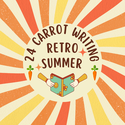 Puffy stickers on a Trapper Keeper, a smile glistening with strawberry Kissing Potion, and a pencil box filled with scratch-and-sniff markers, and you were off to a great start for the school year. But how do you restart your writing after a summer of listening to the Pretty in Pink soundtrack on your Walkman? This Back-to-School Retro Summer post has the perfect checklist. ~ by Amanda Smith September. The luggage is unpacked. The house is put back together. The kids are settled in their back-to-school routines. Which lends me to ask, in the words of our good friend Joey, As much as we itch to get back to writing, finding our groove after the summer can be challenging. Here are a few strategies that help me focus my writing for the last quarter of the year.
Do you belong to a critique group or book discussion group? Often these groups take a hiatus over Summer. Don’t forget to press reset and get back to your normal routines. When I was a kid I used to hate the “back to school” commercials that appeared on TV mid-vacation. We used to say “back to jail” or “back into the cage.” Now I view this time of year differently. I love the excitement of new teachers and learning. I appreciate routines clicking into place, like the gears of a well-oiled machine. And I enjoy the quiet house and increased productivity that it brings. This fall, may you find your desk, reset your schedule, go back to school, and set aggressive goals to finish the year strong!  During the dog-days of summer we are time-traveling back to elementary art class. Grab your Crayola Caddy, draw Harry, and while you are adding Pound Puppy features, consider your story's structure and details, just like my first graders taught me back in 2018. 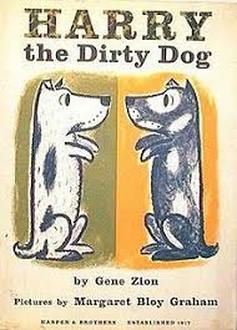 ~ by Amanda Smith As a substitute teacher I often walk into an emergency, with lesson plans drawn up quickly by someone whose mind was in a much more urgent place. On one such a day, the art teacher left me, in her words, “sketchy plans” – most of which involved students finishing current projects followed by open studio. Now, I’m all for open studio and free draw, but first grade had no projects to finish first. That meant 45 minutes of free draw: The definition of chaos. Thankfully, I had a planning period. And an ally in the school librarian. After thinking for a second or two, she pulled Harry the Dirty Dog by Gene Zion off her shelf. “You know,” she said, “kids love dogs. And they always enjoy Harry’s adventures.” Together we studied Margaret Bloy Graham’s illustrations, and a lesson plan was born. Fast forward to the first-grade class. I read the book. The kids were delighted. Then I held up Harry the Dirty Dog. “We are going to draw Harry,” I said. Shock and mayhem. “What!” “We can’t draw like that!” “That’s impossible.” I turned a deaf ear to the protests as I handed out a sheet of paper with a rectangle already drawn on it. I explained that we would have to work together to draw Harry, as it is a step by step process. Then the students and I drew Harry using the parameters of a rectangle. As their dog drawings took shape, their joy was contagious. And here’s the thing: even though they all followed my instructions, not one of the dogs looked the same. We had skinny, long nosed dachshunds, and pudgy, round nosed puppies. We had droopy eared dogs and shaggy tailed dogs. Boy Harrys with spiky collars and girl Harrys with pink bows. Every student loved their own Harry, and was amazed that they could indeed draw like that.
Here’s what I learned by drawing Harry, and how it pertains to writing:
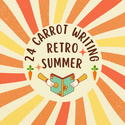 This week's throwback blog was first posted in 2019 and features a gnarly truth about goals. We know it's summer, but you still want to make progress on your path to publication and that means you can't ignore your goals! So crank up your boombox, grab a handful of Pop Rocks, and enjoy as our RETRO SUMMER continues!  By Kelly Carey Every month, according to the 24 Carrot Writing philosophy, I dutifully set both writing goals and craft goals. Every month I hit most but not all of my goals. That’s okay! We have warned against using goals as weapons. Goals are there for motivation. When I miss a goal, I push it over to the next month. Sound strategy right? I thought so, until I took a look back over the past few months and realized that the same goal kept getting pushed. Why? The truth is a bit embarrassing. I’m avoiding the hard goal. Yup. That’s what I’m doing. I’m feeling proud and organized when I sit down to work, but as a scan through my monthly goals, I’m picking off the easy targets and leaving the more challenging tasks to languish and carry over from month to month. The goals that keep getting moved to another month are ones I’m most unsure of – much like I put off doing house chores I don’t like. Laundry or vacuuming? I’ll choose laundry every time. You’ll always have clean socks to wear in my house, as long as you don’t wear them shoe-less on my very dirty floors! I was applying this same dodge and avoid technique to my 24 Carrot Writing goals. This has to stop! I can’t keep clicking off the easy tasks on my goal list. Every month I set a goal to read mentor texts. I love that task and so every month without fail (and sometimes surpassing my objective), I was able to put a nice thick check mark next to that goal. But the monthly intention to draft a new picture book? Pushed! But I’m a writer? I love writing! Writing should come before reading mentor texts! But the blank page, the self-doubt, the internal critic all made reading a lovely book that you all have already written seem like a much nicer (aka easier) task. Time to address this blatant goal slacking. 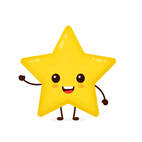 This month I’m picking one super writing goal and one super craft goal and I’m going to underline them – maybe star them – perhaps circle them with a gold pen – and I’m not going to attack anything else on my list until I have hit my super goals every month. I’m actually hoping that those easier, friendlier, can’t-wait-to-do-them goals, which will sit lower on my list, will act as extra motivation. I’ll want to get to those happy place goals, but I’ll have to tackle my super goal first (aka my do-not-pass-go, go-directly-to-them goals!). I’m a little nervous, but I think it will make me more thoughtful when I make out my monthly goals and I’ll be leaning on my 24 Carrot Writing crew to keep me motivated. I bet I’ll feel fantastic when I hit those super goals and that will be worth tackling the hard stuff first! Take a peek at your own goals. Set solid, measurable, and challenging goals. And make sure that you are not hiding behind the easy targets on your list like me! If you were, consider highlighting a super goal, a must do goal, and don’t let yourself avoid it. And now I’m off to do some laundry – just kidding! I’m off to vacuum! Hard stuff first! I’ve got this! 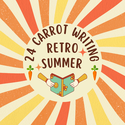 This week's throwback blog was first posted in 2018. This rad post recognizes that you may be looking to catch a wave this summer, but offers tips to make sure your don't wipeout on those writing goals! Enjoy as our RETRO SUMMER continues!  By Annie Cronin Romano Summer is here. It’s a time for sun, sand, and sangria! A time for hanging out with friends and family, relaxing vacations, and outdoor fun. So, my fine writer friends, where does your writing fit into the summertime equation? Because, as most of us know, summer is also notoriously known as a time for slacking. Don’t be a slacker, my writer friends! This is where those writing goals come in handy. Hopefully you included that “forgiveness clause” into your writing goals (see Set Your Writing Goals With a Little Forgiveness, 1/23/18). But if you didn’t, or if you haven’t set your summer writing goals yet, here are some tips for keeping the ink flowing while enjoying this active time of year. Tip #1. Going on vacation? Take a journal with you and write in it daily. It doesn’t have to be long. Just a few reflections on your day, or perhaps a description of a scene that you don’t want to forget. Maybe you came up with some story ideas. Jot them down. Keep your writer’s mind active even when you’re not working on an actual story. Tip #2. Read! What better way to become a better writer than to read consistently. Writers hear it all the time and, naturally, love books, so there’s a good chance you read regularly anyway. But in case time is more elusive for you the rest of the year, take some time this summer to crack the spine on a few books you’ve been wanting to dive into. You may notice some new writing approaches or styles along the way. Tip #3. Use your phone’s note-taking app. Even if you don’t have time to do much extended writing, sparks of inspiration may strike, and you probably won't have your laptop or notebook available if you’re at the amusement park or on a hike. So pull out your phone and type yourself a brief note. Store that idea or inspiration away for another time. Tip #4. Take pictures, especially of unusual things. Vacations are full of picture taking opportunities, but step away from the selfies and snapshots of family, and take some random “slice of life” shots. Then use those images later as writing prompts. I know. Brilliant, right? You never know what the lens will capture. Your next story gem could lurk in those precious photos! Tip #5. Enjoy! After all…it’s summer! Happy writing! ~Annie |
Peruse blogs for advice and tips from KidLit creatives.
Categories
All
Archives
April 2024
Click to set custom HTML
Click on the RSS Feed button above to receive notifications of new posts on this blog.
|

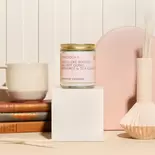
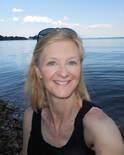

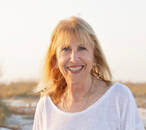
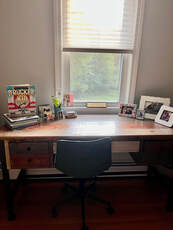
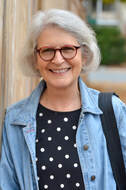
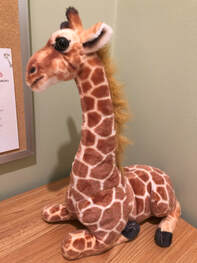

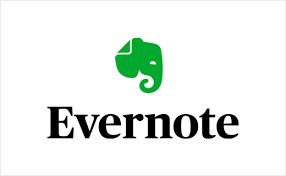
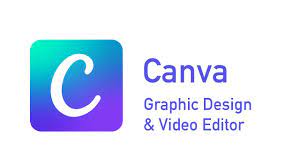

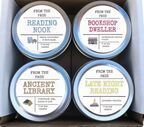
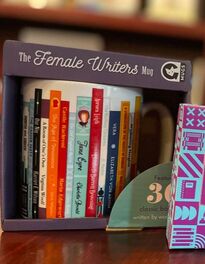


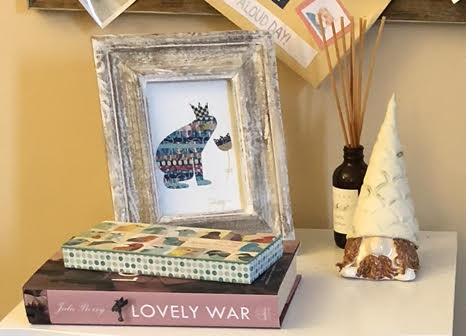

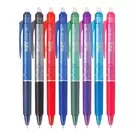

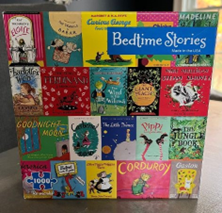

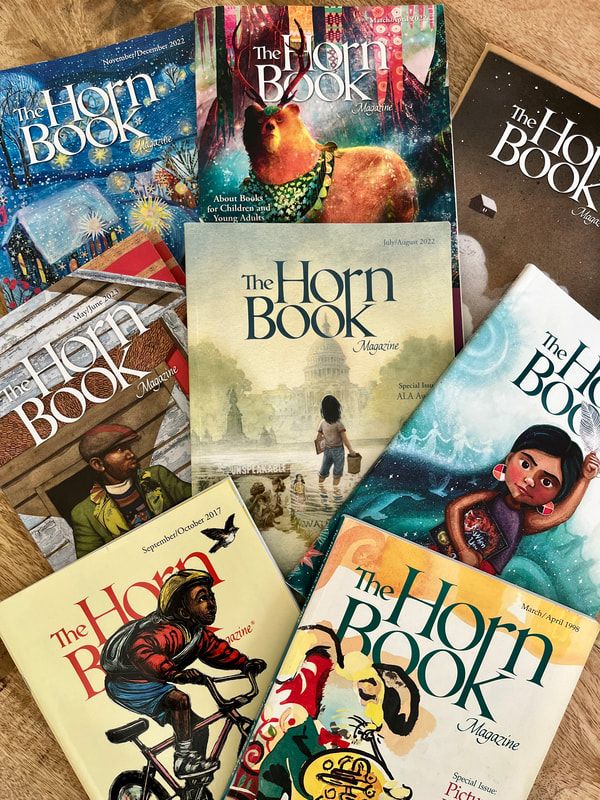
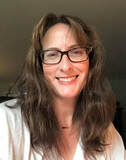
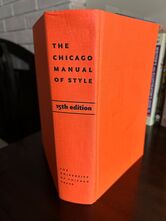
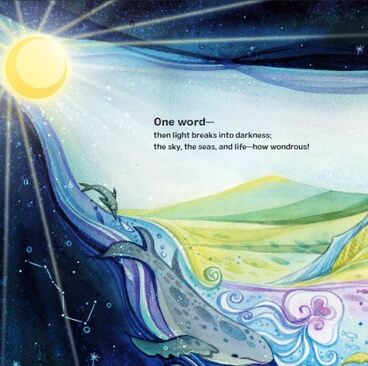
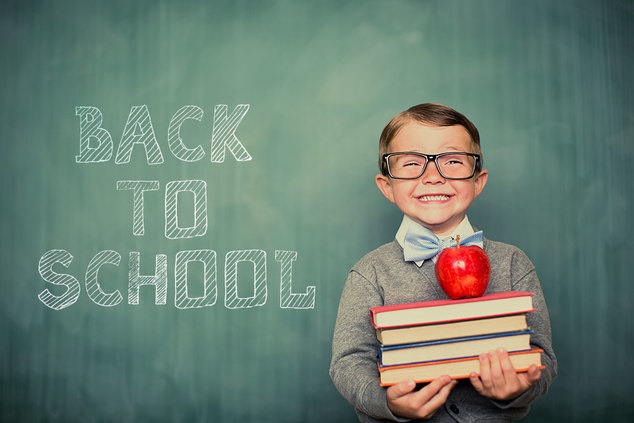
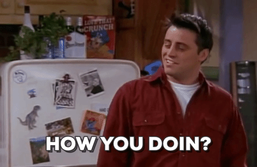
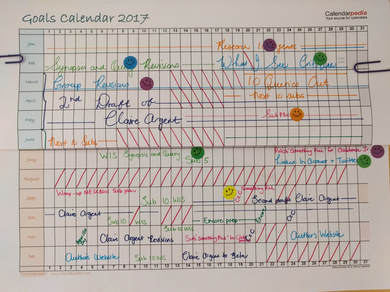
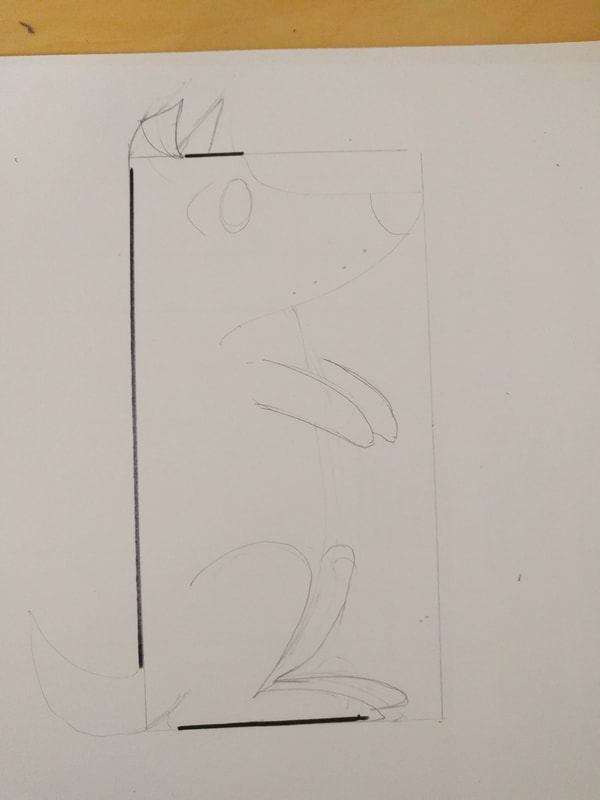
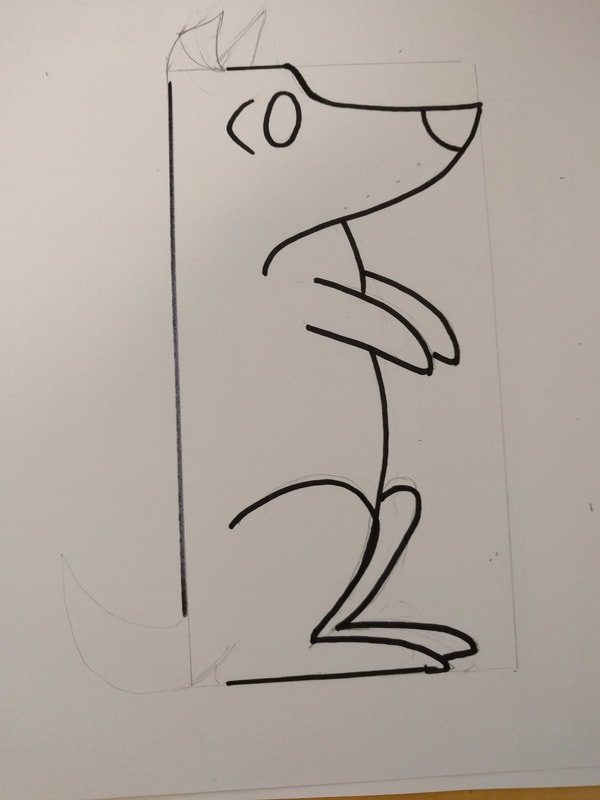
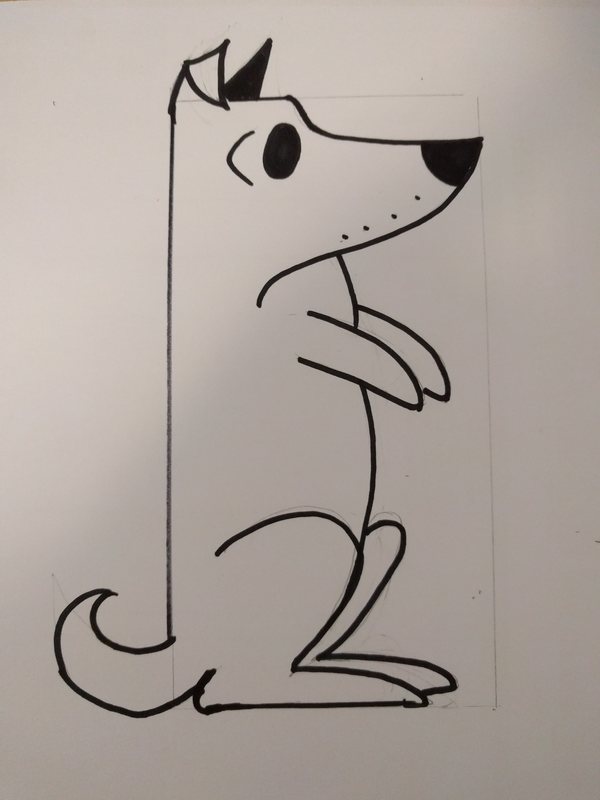
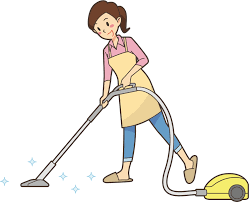
 RSS Feed
RSS Feed